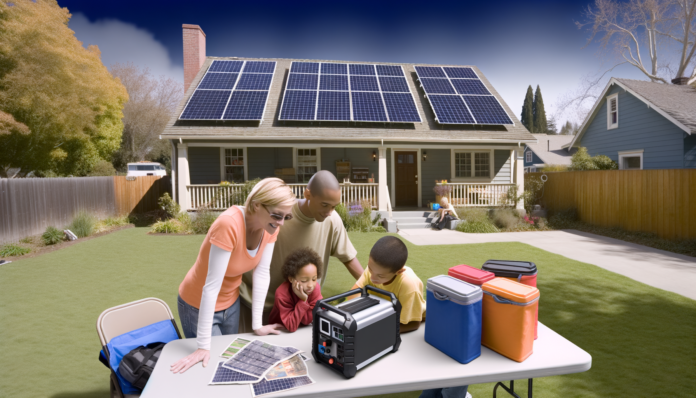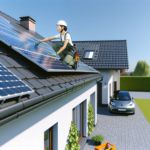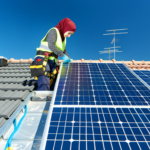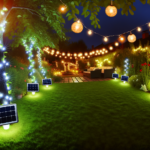Introduction to Solar Power in Emergency Planning
The Importance of Emergency Preparedness
In an increasingly unpredictable world, the importance of emergency preparedness cannot be overstated. Natural disasters, power grid failures, and other unforeseen events can disrupt our daily lives and leave us without essential services. Being prepared for such emergencies ensures that we can maintain a level of normalcy and safety during crises. Emergency preparedness involves planning for various scenarios, stocking up on necessary supplies, and having reliable backup systems in place. One critical aspect of this planning is ensuring a stable power supply, which is where solar power comes into play.
Why Solar Power?
Solar power offers a unique and highly effective solution for emergency preparedness. Unlike traditional power sources that rely on the grid, solar power systems harness energy directly from the sun, making them independent and reliable. Here are a few reasons why solar power is an excellent choice for emergency planning:
- Reliability: Solar power systems can operate independently of the main power grid, ensuring a continuous power supply even during widespread outages.
- Environmental Benefits: Solar energy is a clean, renewable resource that reduces our carbon footprint and helps combat climate change.
- Cost-Effectiveness: Over time, solar power systems can save money on energy bills and reduce the need for expensive fuel-based generators.
- Portability: Portable solar power systems can be easily transported and set up in various locations, making them ideal for emergency situations.
Overview of the Article
This article aims to provide a comprehensive guide on integrating solar power into your emergency planning strategy. We will cover the following sections:
- Understanding Solar Power Basics: Learn how solar panels work, the different types of solar power systems, and the key components involved.
- Benefits of Integrating Solar Power into Emergency Plans: Explore the reliability, environmental benefits, cost-effectiveness, and versatility of solar power in emergencies.
- Assessing Your Solar Power Needs: Evaluate your energy requirements, choose the right solar power system, and calculate storage needs.
- Setting Up Your Solar Power System: Understand the basics of installation, safety considerations, and maintenance tips.
- Practical Applications of Solar Power in Emergencies: Discover how to power essential devices, maintain communication, and use solar energy for cooking and water purification.
- Conclusion and Future Trends: Recap key points, explore emerging solar technologies, and reflect on the future of solar power in emergency planning.
By the end of this article, you will have a thorough understanding of how to effectively incorporate solar power into your emergency preparedness strategy, ensuring that you and your loved ones are well-equipped to handle any crisis.
Understanding Solar Power Basics
How Solar Panels Work
Solar panels, also known as photovoltaic (PV) panels, convert sunlight into electricity. They are composed of many solar cells made from semiconductor materials, typically silicon. When sunlight hits these cells, it excites electrons, creating an electric current. This process is known as the photovoltaic effect. The generated direct current (DC) electricity is then converted into alternating current (AC) by an inverter, making it usable for household appliances and other electrical devices.
Types of Solar Power Systems
There are three main types of solar power systems:
- Off-Grid Systems: These systems are not connected to the utility grid and rely entirely on solar power and battery storage. They are ideal for remote locations and emergency backup power.
- On-Grid Systems: Also known as grid-tied systems, these are connected to the utility grid. They allow homeowners to use solar power when available and draw from the grid when it is not. Excess energy can be fed back into the grid, often resulting in credits or payments from the utility company.
- Hybrid Systems: These combine the features of both off-grid and on-grid systems. They are connected to the grid but also have battery storage to provide power during outages. Hybrid systems offer the most flexibility and reliability.
Key Components of a Solar Power System
A solar power system consists of several key components, each playing a crucial role in the generation, storage, and use of solar energy:
- Solar Panels: These are the primary components that capture sunlight and convert it into electricity. The efficiency and size of the panels determine the amount of energy generated.
- Batteries: Batteries store the electricity generated by the solar panels for use when sunlight is not available, such as during the night or cloudy days. The capacity of the battery bank is measured in amp-hours and determines how long the stored energy can last.
- Solar Charge Controllers: These devices regulate the voltage and current coming from the solar panels to the batteries. They prevent overcharging and protect the batteries from damage, ensuring a longer lifespan.
- Inverters: Inverters convert the DC electricity generated by the solar panels and stored in the batteries into AC electricity, which is used by most household appliances. There are different types of inverters, including pure sine wave and modified sine wave, each suitable for different applications.
- Mounting Systems: These are used to securely attach the solar panels to the roof or ground. Proper mounting ensures optimal angle and exposure to sunlight, maximizing energy generation.
- Wiring and Connectors: High-quality wiring and connectors are essential for safely transmitting electricity between the solar panels, batteries, charge controllers, and inverters. Proper installation and maintenance of these components are crucial for system efficiency and safety.
Understanding these basics is essential for anyone considering integrating solar power into their emergency planning strategy. With the right knowledge and components, you can create a reliable and efficient solar power system to ensure energy independence during emergencies.
Benefits of Integrating Solar Power into Emergency Plans
Reliability During Power Outages
One of the most compelling benefits of integrating solar power into your emergency plans is its reliability during power outages. Traditional power grids are vulnerable to disruptions caused by natural disasters such as hurricanes, floods, and wildfires. Solar power systems, especially those equipped with battery storage, can provide a continuous supply of electricity even when the grid goes down. This ensures that essential appliances like medical devices, refrigerators, and communication systems remain operational, thereby enhancing your disaster resilience.
Environmental Benefits
Solar power is a clean, renewable energy source that significantly reduces your carbon footprint. Unlike gas generators, which emit harmful gases and contribute to air pollution, solar panels produce electricity without releasing any pollutants. By integrating solar power into your emergency plans, you are not only ensuring a reliable power source but also contributing to environmental sustainability. This dual benefit makes solar power an attractive option for those looking to make eco-friendly choices while preparing for emergencies.
Cost-Effectiveness Over Time
While the initial investment in solar power systems can be substantial, the long-term cost benefits are significant. Solar panels have a lifespan of 25 years or more and require minimal maintenance. Once installed, they provide free electricity, reducing your reliance on expensive grid power. Additionally, many regions offer tax credits and incentives for solar installations, further lowering the overall cost. Over time, the savings on electricity bills can offset the initial investment, making solar power a cost-effective solution for emergency preparedness.
Portability and Versatility
Solar power systems offer a level of portability and versatility that traditional power sources cannot match. Portable solar generators and foldable solar panels can be easily transported and set up in various locations, making them ideal for emergency situations where mobility is crucial. These portable systems can power essential devices, charge batteries, and even run small appliances, providing a flexible and reliable power source when you need it most. Their versatility extends to various applications, from powering communication devices to purifying water, making them indispensable in emergency scenarios.
In summary, integrating solar power into your emergency plans offers numerous benefits, including reliability during power outages, environmental sustainability, cost-effectiveness over time, and unparalleled portability and versatility. These advantages make solar power an essential component of any comprehensive emergency preparedness strategy.
Assessing Your Solar Power Needs
Evaluating Your Energy Requirements
Before integrating solar power into your emergency planning strategy, it is crucial to evaluate your energy requirements. This involves identifying the essential devices and appliances you need to power during an emergency. Start by making a list of critical items such as medical equipment, communication devices, refrigeration, lighting, and heating or cooling systems.
Next, determine the wattage of each device and calculate the total energy consumption. This can be done by checking the labels on your appliances or consulting the user manuals. Multiply the wattage by the number of hours each device will be used per day to get the daily energy consumption in watt-hours (Wh). Summing up the energy requirements of all essential devices will give you a clear picture of your total daily energy needs.
Choosing the Right Solar Power System
Once you have a clear understanding of your energy requirements, the next step is to choose the right solar power system. There are several types of solar power systems available, each with its own advantages and limitations. The most common types include:
- Grid-Tied Systems: These systems are connected to the utility grid and can provide power to your home while also feeding excess energy back into the grid. They are cost-effective but will not function during a grid outage unless paired with a battery backup.
- Off-Grid Systems: These systems are completely independent of the utility grid and rely on solar panels and battery storage to provide power. They are ideal for remote locations but can be more expensive due to the need for larger battery storage.
- Hybrid Systems: These systems combine the benefits of both grid-tied and off-grid systems. They are connected to the grid but also have battery storage to provide power during outages. Hybrid systems offer the most flexibility and reliability for emergency preparedness.
When choosing a solar power system, consider factors such as your budget, the amount of sunlight your location receives, and the space available for installing solar panels. Consulting with a professional solar installer can help you make an informed decision.
Calculating Storage Needs
Battery storage is a critical component of any solar power system designed for emergency use. It ensures that you have a continuous power supply even when the sun is not shining. To calculate your storage needs, you need to consider both the capacity and the type of batteries.
The capacity of a battery is measured in kilowatt-hours (kWh) and indicates how much energy it can store. To determine the required battery capacity, multiply your total daily energy consumption by the number of days you want to be self-sufficient. For example, if your daily energy consumption is 5 kWh and you want to be self-sufficient for three days, you will need a battery with a capacity of at least 15 kWh.
There are different types of batteries available, including lead-acid, lithium-ion, and saltwater batteries. Lithium-ion batteries are the most popular choice due to their high energy density, longer lifespan, and lower maintenance requirements. However, they can be more expensive than other types.
In summary, assessing your solar power needs involves evaluating your energy requirements, choosing the right solar power system, and calculating your storage needs. By carefully considering these factors, you can ensure that your solar power system is well-suited to provide reliable and continuous power during emergencies.
Setting Up Your Solar Power System
Installation Basics
Setting up a solar power system for emergency preparedness involves several key steps. First, you need to determine the optimal location for your solar panels. Ideally, this should be a spot that receives maximum sunlight throughout the day, such as a south-facing roof or an open yard.
Next, you will need to decide whether to install the system yourself or hire a professional. While DIY installation can save money, it requires a good understanding of electrical systems and local building codes. Hiring a professional ensures that the installation is done correctly and safely, and it may be required to comply with local regulations.
Once the location and installation method are decided, the next step is to mount the solar panels. This involves securing the panels to a sturdy frame and connecting them to an inverter, which converts the solar energy into usable electricity. Finally, the system needs to be connected to your home’s electrical grid or a battery storage system to store the generated power for later use.
Safety Considerations
Safety is paramount when installing and maintaining a solar power system. Here are some key safety considerations:
- Electrical Safety: Solar power systems involve high-voltage electricity. Always turn off the power before working on the system and use insulated tools to prevent electrical shocks.
- Structural Safety: Ensure that the roof or structure where the panels are mounted can support their weight. Improper installation can lead to structural damage or even collapse.
- Weather Considerations: Solar panels should be securely mounted to withstand high winds and other extreme weather conditions. Use weather-resistant materials and follow manufacturer guidelines for installation.
- Fire Safety: Faulty wiring or poor installation can lead to electrical fires. Regularly inspect the system for any signs of wear or damage and address issues promptly.
Maintenance Tips
Maintaining your solar power system is crucial for ensuring its longevity and efficiency. Here are some maintenance tips:
- Regular Cleaning: Dust, dirt, and debris can accumulate on the panels, reducing their efficiency. Clean the panels with water and a soft brush or cloth every few months.
- Inspection: Regularly inspect the panels, wiring, and mounting hardware for any signs of damage or wear. Look for cracks in the panels, loose connections, or corrosion.
- Monitor Performance: Use a monitoring system to keep track of the system’s performance. This can help you identify any issues early and ensure that the system is operating at peak efficiency.
- Battery Maintenance: If your system includes battery storage, regularly check the batteries for proper charge levels and signs of wear. Follow the manufacturer’s guidelines for maintenance and replacement.
- Professional Check-ups: Schedule regular check-ups with a professional to ensure that the system is in good working order. They can perform more thorough inspections and address any issues that you might miss.
By following these installation basics, safety considerations, and maintenance tips, you can ensure that your solar power system is reliable and effective in providing energy during emergencies.
Practical Applications of Solar Power in Emergencies
Powering Essential Devices
In the wake of a natural disaster, access to electricity can be severely disrupted, leaving homes and critical facilities without power. Solar power systems can provide a reliable and sustainable source of energy to keep essential devices running. **Medical equipment**, such as ventilators and dialysis machines, can be lifesaving and must remain operational. **Refrigerators** are crucial for preserving food and medications, while **heating and cooling systems** ensure that living conditions remain safe and comfortable. By integrating solar power into your emergency planning, you can ensure that these vital devices continue to function even when the grid is down.
Solar Power for Communication
Effective communication is paramount during emergencies. Solar power can be used to keep communication devices operational, ensuring that you stay connected with emergency services, family, and community members. **Solar-powered charging stations** can be set up to recharge cell phones, radios, and laptops. These stations can be particularly useful in remote or hard-to-reach areas where traditional power sources are unavailable. Additionally, **solar-powered communication systems** can support emergency response teams by providing a reliable source of power for radios and other communication equipment, facilitating coordination and information dissemination.
Solar Cooking and Water Purification
Access to clean water and the ability to cook food are critical during emergencies. Solar power can be harnessed for both purposes, enhancing your emergency preparedness. **Solar cookers** use the sun’s energy to cook food, eliminating the need for fuel and reducing the risk of fire hazards associated with traditional cooking methods. These cookers are portable, easy to use, and can be a lifesaver in situations where conventional cooking facilities are unavailable.
**Solar-powered water purification systems** are another essential application. These systems can provide a sustainable and reliable source of clean drinking water by using solar energy to power filtration and purification processes. This is particularly important in disaster-stricken areas where water sources may be contaminated, and traditional water treatment facilities are not operational. By incorporating solar cooking and water purification into your emergency plan, you can ensure that basic needs are met even in the most challenging circumstances.
In summary, integrating solar power into your emergency planning strategy offers numerous practical applications that can significantly enhance your resilience during crises. From powering essential devices and communication systems to providing means for cooking and water purification, solar energy proves to be a versatile and reliable resource in times of need.
Conclusion and Future Trends
Recap of Key Points
In this article, we have explored the integration of solar power into emergency planning strategies. We began by emphasizing the importance of emergency preparedness and why solar power is a viable option. We delved into the basics of solar power, including how solar panels work, the types of solar power systems, and their key components. The benefits of integrating solar power into emergency plans were highlighted, such as reliability during power outages, environmental benefits, cost-effectiveness over time, and portability. We also discussed how to assess your solar power needs, set up your system, and practical applications during emergencies.
Emerging Solar Technologies
The future of solar power in emergency planning is promising, thanks to continuous advancements in technology. Emerging solar technologies are set to revolutionize how we harness and utilize solar energy. Some of the most exciting developments include:
- High-Efficiency Solar Panels: New materials and designs are increasing the efficiency of solar panels, allowing them to generate more power from the same amount of sunlight.
- Flexible and Portable Solar Panels: Innovations in flexible solar panels make them easier to transport and install, which is particularly useful in emergency situations.
- Solar-Powered Generators: These generators are becoming more compact and efficient, providing a reliable power source that can be easily deployed during emergencies.
- Advanced Battery Storage: Improvements in battery technology are enhancing the storage capacity and lifespan of solar power systems, ensuring a continuous power supply even when sunlight is not available.
- Smart Grid Integration: The integration of solar power with smart grid systems allows for better management and distribution of electricity, optimizing the use of solar energy resources.
Final Thoughts on Solar Power in Emergency Planning
Integrating solar power into your emergency planning strategy is not just a forward-thinking move; it is a practical and sustainable solution to ensure resilience during crises. Solar power offers a reliable, environmentally friendly, and cost-effective energy source that can be crucial in times of emergency. As technology continues to advance, the accessibility and efficiency of solar power systems will only improve, making them an even more attractive option for emergency preparedness.
In conclusion, the role of solar power in emergency planning cannot be overstated. By investing in solar power systems, you are not only preparing for unforeseen emergencies but also contributing to a more sustainable and resilient future. As we look ahead, the integration of emerging solar technologies will further enhance our ability to respond to and recover from disasters, ensuring that we are better equipped to handle whatever challenges come our way.






